PPC
Check out all the latest in PPC industry updates and find out how they could impact your paid performance here
Google Merchant Centre update
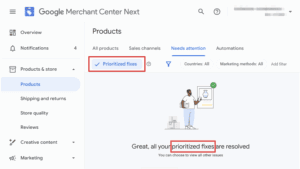
GMC is now showing priority diagnostics only. This could mean advertisers might miss non-critical issues from flagging. However, the good news is that you can switch off filters to see all diagnostics. The new system update will now only highlight urgent problems, so it will be important for users, as it could lead to overlooked issues.
Find out more
Combination tabs are now live in Pmax asset groups.
Combination tabs are now live in Pmax asset groups. This new feature in Google Ads provides transparency into which combinations of headlines, descriptions, images, and logos are performing best for your Performance Max asset groups. This will allow you to see best performing creative mixes, understand the AI ad assembly process and optimise for future assets. This gives more insights into performance. In essence, this helps you to better understand what resonates with your audience and how to improve them.
See Google helpGoogle rolling out brand inclusions to standard shopping campaigns
Google has quietly started rolling out brand inclusions to standard shopping campaigns in order to give advertisers more control over and precise management of which brands apear in shopping ads.
How it works:
This new feature will let you directly add in or remove brand lists to ad groups of both Performance Max and standard shopping. Before, targeting tools were only available in Performance Max and AI, leaving standard shopping in the dark when it comes to brand visibility. This means you can now define exactly which brands to include or exclude, preview in the set up and apply changes within the actual Google Ads interface.
What’s the benefit:
This update is huge for e-commerce brands because it allows users to protect brand-specific budgets or exclude brand-specific budgets. This will save time in the initial set up of campaigns because it saves having to use manual segmentation or using scripts to pull out branded keywords.
Read moreGmail video auto open in mobile app
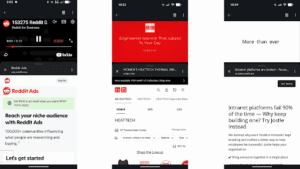
This is update allows users to automatically open the advertiser’s site in app, which could potentially inflate site traffic data. This is because users who never intended to visit the site may click on the video potentially inflating website traffic and remarketing lists. This will be crucial for anyone running Demand Gen campaigns & Performance Max as users will have to check Gmail placements, especially if you are using clicks-based bidding around peak times of the year like Black Friday & Christmas, as there might be a lot of wasted spend here.
Read moreInvestment Strategy
A big update for anyone who is running ads with tighter budgets, called Investment Strategy.
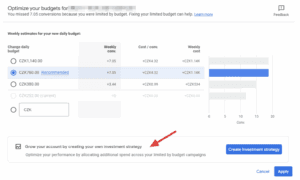
What is it?
- It shows you what could happen if you had a higher budget before you increase budgets
- This gives you forecasts on conversions, clicks and revenue before you actually spend more
- The benefit of this is that it allows you to see what the potential ROI is, which is especially useful if you want to see results before scaling ad spend. Sometimes, increasing budget and ROI go hand in hand, so this gives you a projection
Benefits
- This is different to the performance planner on Google Ads because this is for quick budget increase decisions rather than long-term campaign planning
- This allows you to quickly assess weekly spend increments on campaigns that are limited by budget. Performance Planner is good for long-term strategies, such as Q1 planning, where there could be lots of different scenarios.
Asset Display reporting
Google is asset-level reporting to display campaigns which will allow users to compare performance so you can decide which ones to keep and which ones to replace. It also shows when the asset was last updated, meaning you can better understand when ad fatigue may be affecting performance.
Display ads are used as part of a wider marketing strategy to reach a broader audience, for precise targeting and to diversify the marketing strategy. Research shows that around 63% of users feel positive about a brands that use native ads however, the average CPC for display is significantly higher than search.
This new assets reporting feature should help to bring more clarity & provide insights that are more in line with what we see in Performnace Max.
See herePlacement visibility for search partners
This update applies to shopping, search and App campaigns, which will give advertisers additional transparency into traffic sources. This mirrors what we can see for performance max by showing site-level data. This is going to be rolled out over the coming weeks.
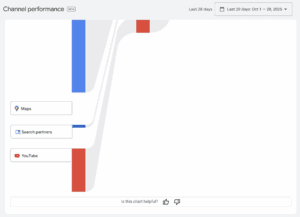
Without a search partner, reporting it can be difficult to opt in to most ads. No advertisers will have the opportunity to see if it fits the brand standards and if it adds real value to the business as a whole.
See more‘Sponsored’ at the top of search results instead of ‘Ad’
The latest Google update is shaking things up for advertisers. Instead of the old ‘Ad’ instead Google just gives the option to hide sponsored results in both search and shopping.
As a user, this should make it much easier to improve the relevance of searches, rather than most known brands dominating the top of the page.
This shift should encourage advertisers to think more about these key areas:
- Ad copy will need to be stronger and more compelling than ever
- Auction insight will have to be monitored more closely to see if advertisers are appearing in the right ‘niche’ or market
- Landing pages will also have to reflect the messaging in the ads. Therefore, a fully integrated SEO and PPC strategy will allow for a better user journey.
- People who tend to ignore ‘ad’ tagged results may not realise they’re clicking on an ad, so this can lower ad discrimination. This is useful for campaigns that want to target more top funnel users.
Big Merchant Centre Update
You can create a merchant centre for agencies (this is similar to MCC to manage clients). This should help to create a tailored experience designed especially for agencies.
Benefits
- Increased operational efficiency – A single-view interface will help you manage multiple accounts. Ideally, this should save agencies 1-2 hours per week, making the GMC a lot more efficient and simplified.
- Enhanced leadership options – Monitor all Merchant Centre accounts from a central dashboard. This allows your team to quickly identify issues, delegate tasks, and improve team collaboration.
- Proactive issue resolution – This will allow you to detect problems early so that agencies can avoid suspensions with Google before they happen
Demand Gen NCA
Google have rolled out Demand Gen new customer acquisition (NCA) goals.
New customer value mode
What’s new?- If you’re only focused on incremental growth with a strict budget and campaign strategy. It adds value to conversions from new customers as well as existing ones.
When to use?- This strategy helps to maximise revenue from all customers, as well as trying to acquire new ones.. You can still choose to bid higher for new customers than existing ones by allowing advertisers to set a specific value per purchase.
New customers only mode
What’s new?- Test if you’re optimising towards purchases. The campaign on this strategy will only bid for customers who are identified as new to your business.
When to use?- This is best for businesses focusing on growth and revenue when acquiring new customers with often with one-off purchases or lead generation campaigns.
Channel selection when no campaign goal is chosen
Choose all channels or select individual channels if no campaign goal is set in the campaign flow creation, defaulting to pmax for all channels. The update simplifies setup but may lead to more auto-generated PMAX campaigns, especially among less experienced users.
Read hereBrand profiles spotted in Google Merchant Centre
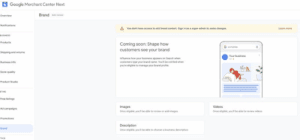
This appears in the Merchant Centre Next “Brand” section. Brand profiles let businesses share their brand stores, add media and promotions directly through search. Seen in only a few accounts at the moment. As availability widens, merchants will want to test how Brand Profiles influence click-through rates, conversions, and shopper perception.
Read moreDemand Generation Updates
Major update to demand gen shifting from mid funnel conversion with interest-based targeting (similar to a Pmax campaign.) Theres lots of benefits to this including:
Greater campaign control
- More control over where ads appear (YouTube, Discover, Gmail).
- Specific targeting now available for YouTube Shorts.
- Enhanced balance between automation and advertiser input.
Creative improvements
- New vertical (9:16) image ads tailored for YouTube Shorts.
- Automatic video enhancement tools to streamline short-form content creation.
- Smoother ad creation workflow with preview sharing for quick approvals.
- Local offers help to showcase in-store offers to nearby shoppers as shown below
Better performance tracking
- New reporting columns for clearer performance comparisons, especially vs. paid social.
- Includes omnichannel bidding too so you can optimise to total online and offline sales
- View-through conversions added for improved cross-channel visibility.
- Helps optimise budget allocation based on more detailed insights.
Shift from Video Action to Demand Gen
- Video Action campaigns to be phased out by April 2025.
- Demand Gen offers a broader reach and more flexible ad placements.
- Encourages experimentation with new formats and multi-channel delivery.
Google Search Ads now show traffic volume
The new Search Ad feature displays a traffic volume label directly under Headlines and Descriptions, revealing how much traffic an advertiser receives in Search Ads, PMax, and AI Max campaigns. However, the source of this data is unclear—it might be based on Google Ads clicks, linked GA4 accounts, or Google’s broader ecosystem signals like Chrome and Android usage. But Google has not confirmed anything on this.
This label adds social proof, potentially increasing trust and click-through rates, but raises concerns about transparency, data sourcing, and advertiser control. Advertisers may not be able to opt out, meaning competitors can see traffic volumes which could infer budget changes.
Find out moreBroad match testing simplified
Currently, testing broad match within a Google Ads account generally requires building a new campaign to specifically target broad match keywords. However, Google has just announced a new feature which allows broad match keywords to be tested within a single Search campaign as long as it is using smart bidding. The framework automatically creates broad match versions of your exact and phrase match keywords, and traffic is then split 50/50 between the existing setup, the control, and the broad match treatment.
The update provides significant improvement in how advertisers can test match types, which is usually more complex and risks errors. By removing the need for separate campaign builds, the process becomes much more streamlined, thus reducing setup mistakes. It also enables faster, more accurate results and with built-in reporting, performance insights are much clearer.
Read more hereTesting of URL inclusions and exclusions for search campaign
Google Ads is testing letting advertisers choose URL inclusions and exclusions within Search campaigns’ dynamic ads. Under the keywords section of the interface, users can select specific landing pages which may include content from low-value or irrelevant pages to be excluded. Equally, advertisers can now prioritise those higher-performing landing pages to be included in the targeting.
Where there has been a risk in the past that enabling dynamic ads can create ads for pages that don’t provide value for the ads, this update provides advertisers increased control over what Google is advertising. Although this feature is still in beta, it appears a powerful tool for fine-tuning dynamic ads by helping avoid ads driving traffic to irrelevant pages, thus improving the user journey and hopefully ultimately benefiting ROAS.
Find out moreNew bidding type for Demand Gen
Google Ads has introduced Target Cost Per Click (tCPC) bidding for Demand Gen campaigns, aiming to allow advertisers to maximise clicks while maintaining control over their average CPC.
It works by advertisers setting a Target CPC, defining the average amount they are willing to pay per click. Google’s machine learning then dynamically adjusts bids based on a variety of factors such as device, browser, location and time of day. Cost of clicks will vary but the system aims to maintain the average CPC set by the advertiser.
Unlike Target CPA bidding, which focuses on post click actions, tCPC prioritises click volume. Thus being an ideal option for campaigns aiming to drive traffic rather than conversions. Advertisers are able to automate bidding while keeping costs predictable.
Read more hereMicrosoft Advertising’s reporting update
What’s new in Microsoft Advertising’s overhaul?
- Smarter reporting: A redesigned reporting interface that aims to be faster, more intuitive and designed to help users easily locate metrics that apply to them.
- Performance Max: Better insights, improved budgets and bid controls across the various channels are included in the updates, alongside increased transparency on what is actually driving results.
- Cross-platform synergy: Another update involves streamlined dashboards that bring together search, display and video performance into one place.
- Shopify + Microsoft: The Microsoft Channel app on Shopify now supports more global markets, including the UK, Japan & Australia. Meaning merchants can connect Microsoft Ads directly from Shopify, sync product catalogues to Bing & MSN Shopping as well as running performance max campaigns.
These updates provide advertisers increased control, visibility and ultimately efficiency. The improved reporting makes performance tracking easier and faster. The Performance Max updates offer smarter bidding and more flexibility, while the improved import tools and Shopify integration makes cross platform campaigns much easier to manage and scale.
Find out moreYouTube is testing new ad styles
YouTube is currently testing 30 second non-skippable ads within regular Google Ads campaigns, extending a format that was previously exclusive to premium YouTube Select. These ads are being included alongside existing 15 second non-skippable and 6 second bumper spots. Advertisers can use the same targeting options as others in stream formats. This new feature is currently within its beta phase.
Read more hereAn increase in PMax Search Themes
Google continues to refine Performance Max (PMax) with an increase in Search Themes cap from 25 to 100 per asset group. The update will provide advertisers with increased ability to guide AI-driven campaigns through allowing greater control over how queries are matched.
Search Themes act as a key signal for Google’s automation; therefore, quadrupling the limit grants advertisers the ability to better guide their PMax campaigns. Alongside this, where Performance Max campaigns are highly automated, these increases in Search Themes support improved advertiser control for targeting.
Read more